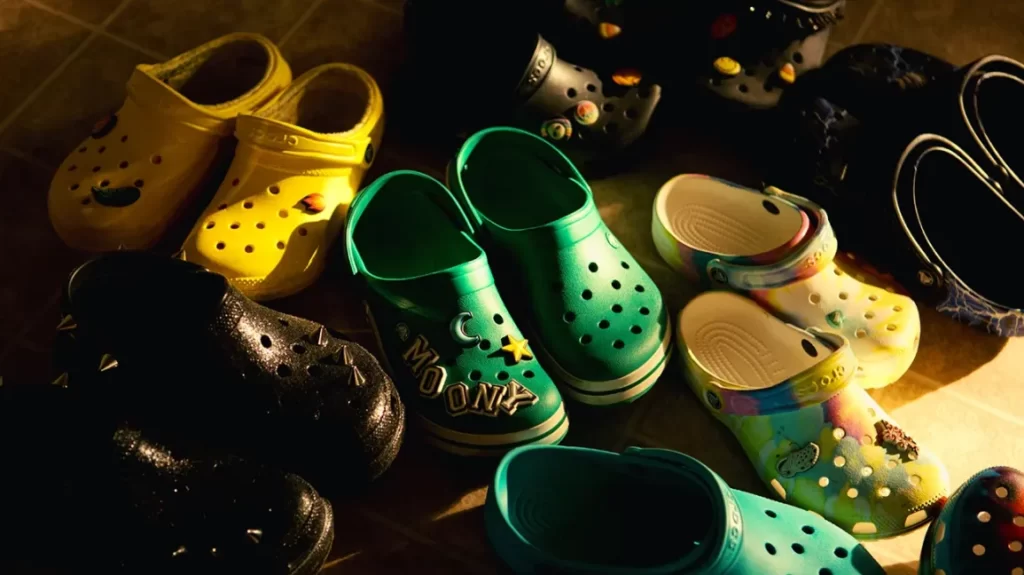Crocs – Ugly Success

The brand’s “ugly duckling” status is precisely what has made it so successful, and many have taken to the brand.
In 2002, three entrepreneurs—Scott Seamans, Lyndon Hanson, and George Boedbecker Jr.—conceived of Crocs. Boedbecker and Hanson had a connection from their time as undergraduates at the University of Colorado. Also, Boedbecker was connected to Seamens due to their mutual admiration of the sport. The three came across a brand-new style of boating clog while on vacation in the Caribbean, thanks to a Canadian company called Foam Creations. Seamens proudly displayed the exceptional slip-resistant clog he was wearing to his companions. It was made using a novel substance known as Croslite. The foam, which is unique to Crocs, is closed-cell resin rather than the more commonplace plastic or rubber. When they got back to the US, they swiftly bought the patent for the Foam Creations manufacturing technique after discussing how it might be improved. In 2004, Crocs finally succeeded in acquiring exclusive ownership of the Croslite patent.
Seamans was responsible for the design, Boedbecker took on the role of CEO and found investors, and Hanson was in charge of day-to-day operations. The shoe was very, extremely, extremely comfy. In 2002, during the Fort Lauderdale Boat Show in Florida, Crocs debuted its first-ever manufactured model, the Beach.
Crocs were first created as a boat shoes after being inspired by the Dutch clog. This basic fact may help settle some debates about the controversial materials used to construct Crocs. The shoes were initially designed with boaters in mind, thus they have boater-specific details like grip-focused bottoms, waterproof materials, and foot protection. Crocs, which took inspiration from clogs, are very practical, whether you’re sailing the seven seas or simply doing errands around town.
The company was named “Crocs” as its creators observed that the tops resembled crocodile snouts when seen from the side. The brand took its name from the crocodile, a creature adapted to a wide variety of habitats, since the shoes were created to be worn both on land and in water.

Even though the funny-looking clog was first thought of on a sailing trip, it quickly became popular with more than just sailors. In a short time, millions of people were purchasing them. Nurses, physicians, chefs, painters, and other people who are on their feet all day quickly discovered Crocs and proclaimed them a game-changer due to the comfort, hygiene, and “natural” feel of the material.
In 2018, the company improved upon Croslite by making a new material called LiteRide, which is “25% lighter and 40% softer than Croslite while still offering shock absorption and support.”
Every pair of Crocs, whether they are for children or grown men in size 15, have 13 holes on the upper. But, their purpose extends beyond mere beauty. The perforations in the upper let air and moisture escape, keeping your feet dry and comfortable.
Crocs bought the family business Jibbitz so that it could use the holes in its shoes to sell charms. When Sheri Schmelzer was inspired to embellish her children’s Crocs with fake flowers and charms, she and her husband Rich founded Jibbitz in 2005.
But, the brand’s “ugly duckling” status is precisely what has made it so successful, and it may prove to be a formidable obstacle in its efforts to become a mainstream brand.
Reference
https://slate.com/news-and-politics/2007/07/how-crocs-conquered-the-world.html



